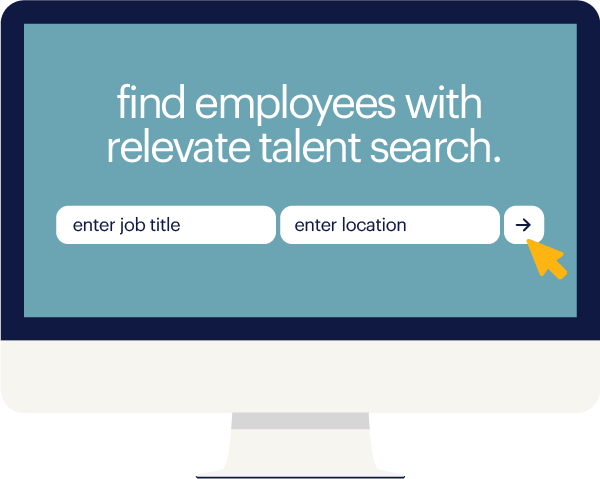For businesses today, an old saying holds true: time really is money. Yet for the managers who are entrusted with creating weekly and monthly schedules — spreadsheets where time goes in and money comes out — the process rarely feels like an exercise in efficiency.
|
Just consider the following numbers from one recent report.
- For roughly half of managers today, scheduling takes more than two hours each week on average.
- But for some it takes even longer — way longer: A smaller percent report spending as many as 12 hours each week on scheduling.
- When scheduling goes haywire, workers miss shifts, with associated costs that can quickly add up: In fact, each missed shift is equivalent to an additional $633 in monthly outlays, meaning one missed shift each month would net out to more than $7,500 in needless annual expenses.
Plus, when your employees don't get the schedules they want, voices get raised. Workers disengage. Morale suffers. Absenteeism skyrockets. The consequences for your business are every bit as predictable as they are undesirable, and all of them can be avoided.
Scheduling may not be easy, but it can be easier. Take a look at the following common scheduling headaches, followed by smart fixes for each. So if you recognize even one of these symptoms at your organization today, we'll show how you to make it a thing of the past.
three signs you have a scheduling problem
All of the following are red flags that go hand-in-hand with scheduling problems. Naturally, of course, correlation isn't causation — and we'll discuss that, too — but alarms should go off if you see any of these at your company.
1. absenteeism and problems with headcount
Confronted with a shift they didn't want or plan for, your employees have two choices: Suck it up and put in the hours, or don't show up at all. And unfortunately for you, often employees gravitate toward the latter.
No-show employees are a disaster — for so many reasons. Beyond the immediate business disruption, there's the bottom-line cost:
|
What's worse, it can have a negative ripple effect that touches a wider and wider circle of workers.
After all, you've got a vacancy to fill — immediately. And that means you (or someone from HR) is going to have to play telephone tag, bothering every employee you have on payroll until you're able to locate a replacement.
2. low morale
In the above section, we suggested employees in a scheduling dilemma have two options — show or no-show— and they'll usually pick the latter. So what happens when they don't?
In that case, you've got a disgruntled employee on your hands, and that can be just as bad as not having someone show up at all. Consider the fact that 53 percent of U.S. workers say they're unhappy at work as things stand.
|
Throwing someone into the mix who's truly angry about being there — that's about as dangerous as throwing water at an electrical fire. You'll know you have a morale problem when you start to see some telltale symptoms: arguments between employees, decreased productivity, frequently missed deadlines and worse.
3. frequent (and unplanned) overtime
Employers should be closely following the latest rules governing eligibility for overtime pay, which have been constantly in flux. One recent rule change, for example, stipulates that employees who earn less than $684 per week, or $35,568 annually, must be classified as non-exempt — and be paid overtime for all hours worked over 40 in a given week.
The bottom line is that frequent and unplanned overtime indicates more than just a scheduling issue. It signals a failure of planning more generally — because if you can accurately forecast demand and have robust talent strategies in place, it shouldn't be happening.
4 smart scheduling fixes
Now that you've got a sense of what it looks like when scheduling goes wonky, here's what you can do about it.
|
Studies show that employees prize flexible work schedules almost as much as health benefits, and there are a host of new tech applications to help you give it to them. Plus, the latest scheduling software is mobile-friendly, meaning employees can actually swap shifts on their own and arrange for coverage when scheduling conflicts arise. And for any manager currently knee-deep in scheduling spreadsheets, that should free up time to add value to the business.
|
Recent research reveals that, for nearly half of U.S. employees today, work schedules are dictated from the top down; 40 percent say they have some input, but only "within limits"; and a liberated minority — 15 percent — report being "free to decide." But there's no reason your workforce can't be among that 15 percent, provided you build a larger pool, accurately plan for demand and introduce flexible scheduling options. After all, happier employees are more productive employees.
|
Employers should be closely following the latest rules governing eligibility for overtime pay, because right now they're in flux. The most notable change, expected to take effect in 2020, will increase the minimum salary threshold for overtime eligibility to $35,000 per year (or $679 per week), meaning more than a million U.S. workers may be eligible for overtime pay in the near future. So stay tuned.
|
Staffing firms today can take scheduling challenges off of your plate from end to end, wielding the latest, state-of-the-art technologies to eliminate many of the pain points discussed above. Beyond instantaneously increasing the size of your available labor pool, these partners can also help you build more robust talent acquisition strategies, implement scheduling best practices and finally move the needle on challenges like retention and engagement, all in one fell swoop.
key takeaways
Any organization confronting scheduling challenges should move fast, and act strategically, to get out ahead of the problem. The solutions we've outlined should help, and the costs we've discussed aren't the only ones to be worried about.
- Employers should be aware that many states have adopted new and stringent rules around scheduling.
- These so-called "predictive scheduling" laws require employers to provide workers with significantly more advance notice about weekly work schedules — and unfortunately, that's something nearly half (47%) of companies say they're ill-prepared to do at the moment, according to one survey.
- If you aren’t sure if or how these scheduling laws impact your city and state, here’s a handy tool to help.
Addressing scheduling pain points should be a top priority for organizations today. If not, the clammer of unhappy voices at your organizations might become deafening, exacerbating talent-related challenges as volume goes up.
So avoid the needless bickering and check out Randstad's Workforce Management learning center for more actionable insights, tips and strategies to help you stay ahead.








